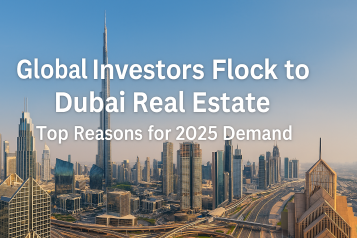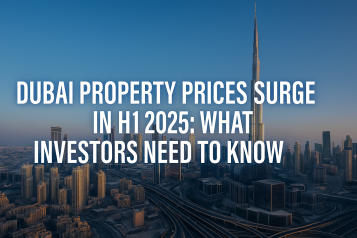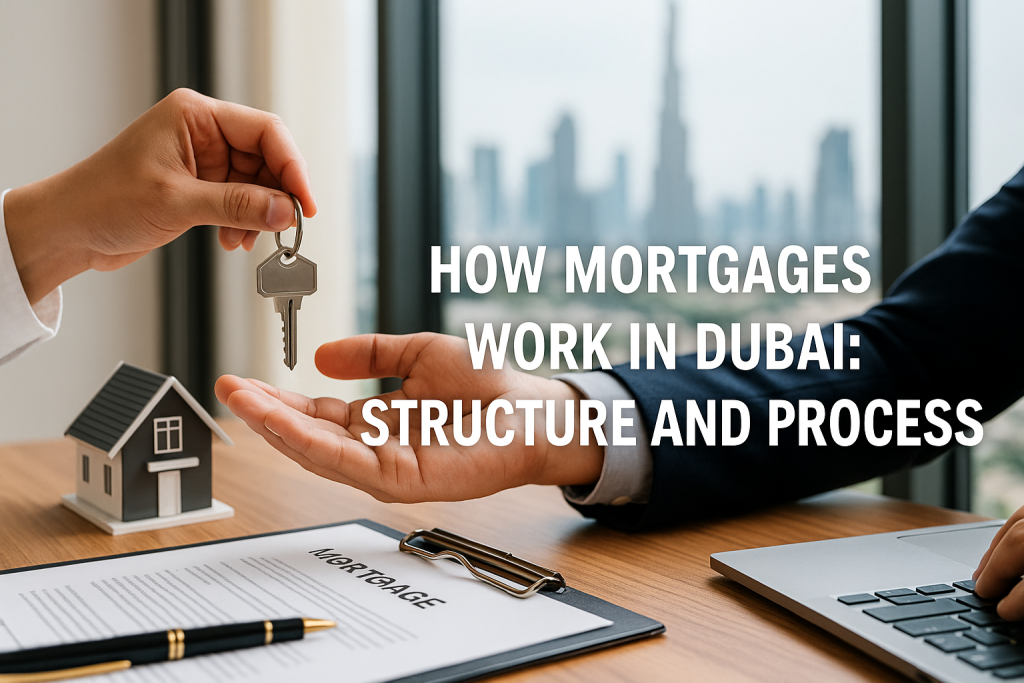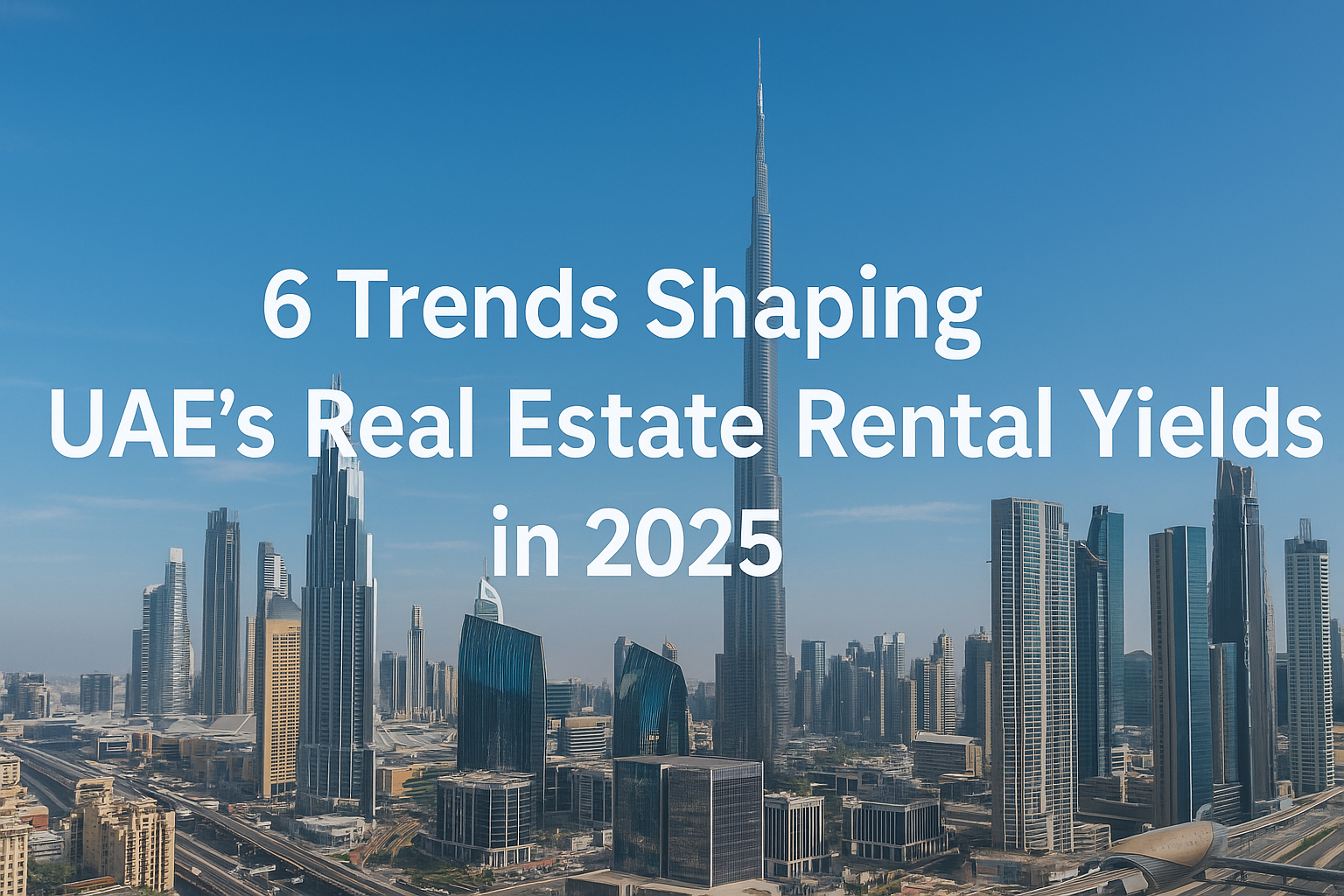

Introduction: Why Rental Yields Are a Priority in 2025
As real estate investors around the world adjust to shifting market dynamics, rental yields have become a more prominent indicator of portfolio health. In the UAE, 2025 is ushering in a unique rental landscape shaped by macroeconomic shifts, post-pandemic migrations, regulatory changes, and evolving tenant expectations. Whether you’re a seasoned landlord or a first-time investor, understanding Rental Yields Trends is key to capitalizing on this transforming market.
According to the Dubai Land Department, 2024 closed with over AED 761 billion real estate deal, signaling strong momentum heading into 2025. Rental markets, in particular, are seeing heightened demand, driven by both population inflows and lifestyle-driven relocations.
📈 Dubai’s luxury real estate market (an EstateX focus) surged 15% in Q1 2025, driven by foreign investment and high-net-worth migration.
What’s your top reason for investing in Dubai today? 👇
Source: Knight Frank Wealth Report 2024 — https://t.co/p2H2eNrT1v)
— EstateX (@estatexeu) April 2, 2025
This article breaks down six critical trends that are defining the performance of rental yields in the UAE real estate market and outlines what investors need to know to stay ahead.
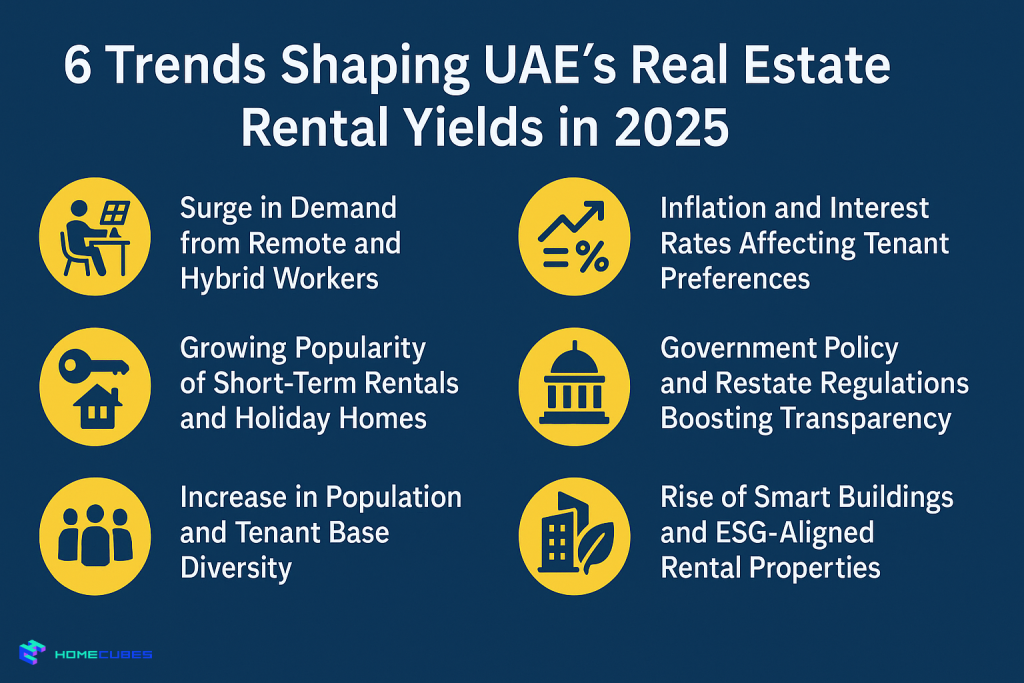
Trend 1: Surge in Demand from Remote and Hybrid Workers
Flexible Work Is Driving Urban and Suburban Leasing
The rise of remote and hybrid work across sectors has reshaped how and where people choose to live in the UAE. Many expatriates and local professionals are opting for residential units that provide a better work-life balance, larger layouts, and proximity to lifestyle amenities. In response, the ways UAE real estate adapts with hybrid work trends are emerging.
Areas such as Dubai Silicon Oasis, Jumeirah Village Circle, and Meydan have seen increasing rental inquiries due to their blend of affordability and functionality.
Rental Yields Trends Impact:
- Mid-tier communities are delivering higher yields due to consistent occupancy
- Larger unit sizes with dedicated home office spaces now command premiums
- Properties near coworking spaces or business parks are outperforming peers
According to Bayut’s 2024 Market Report, rental prices in communities popular with hybrid workers rose between 8%–15% year-on-year, contributing to stronger net yields.
Trend 2: Growing Popularity of Short-Term Rentals and Holiday Homes
Tourism and Digital Nomad Visas Fuel New Demand Segments
With Dubai and Abu Dhabi attracting record-breaking numbers of international tourists, and long-stay visitors benefitting from digital nomad visas, the UAE’s short-term rental market has gained traction. Investors are capitalizing on platforms like Airbnb and Booking.com to generate higher returns compared to traditional long-term leasing.
New supply zones such as Dubai Marina, Palm Jumeirah, and Downtown Dubai remain top-performing areas for short-stay profitability.
Rental Yields Trends Impact:
- Gross yields on short-term rentals range from 8% to 12%, exceeding the long-term average
- Holiday units with furnishing, concierge, and flexible terms have high occupancy
- Regulatory clarity from Dubai’s Department of Economy and Tourism has reduced compliance risk
Trend 3: Increase in Population and Tenant Base Diversity
Expats, Entrepreneurs, and Students Reshape Demand Dynamics
The UAE’s expanding visa programs—such as the Golden Visa, Green Visa, and Freelancer Permit—are bringing in a wave of long-term residents. This includes startup founders, healthcare professionals, and creatives who are now eligible to rent longer and explore more premium offerings.
Further, the rise of international universities and regional campuses is leading to demand for shared accommodations and purpose-built student housing.
Rental Yields Trends Impact:
- Higher rental stability due to longer leases and visa-linked tenancies
- Niche sectors like student housing and co-living offer above-average yields
- Investors can reduce vacancy risk with diversified property portfolios
Trend 4: Inflation and Interest Rates Affecting Tenant Preferences
Cost-Conscious Renters Are Changing the Leasing Equation
As inflation lingers globally and the UAE maintains a moderately high interest rate environment, many potential buyers are postponing property purchases and opting to rent instead. This is strengthening rental markets in traditionally owner-occupied zones.
At the same time, tenants are becoming more value-conscious, seeking energy-efficient units and buildings with smart home features to control utility costs.
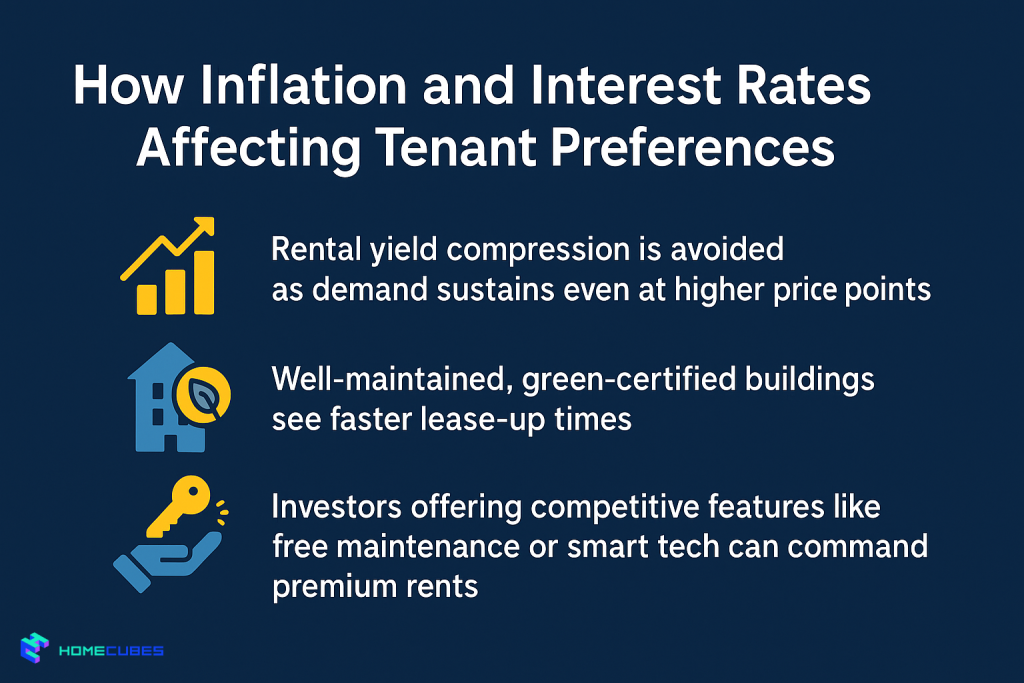
Rental Yields Trends Impact:
- Rental yield compression is avoided as demand sustains even at higher price points
- Well-maintained, green-certified buildings see faster lease-up times
- Investors offering competitive features like free maintenance or smart tech can command premium rents
Trend 5: Government Policy and Real Estate Regulations Boosting Transparency
Investor-Friendly Reforms Strengthen Confidence in Rental Markets
Dubai’s government has introduced initiatives such as the Rental Index Calculator, the Ejari registration system, and a proposed Unified Lease Contract to standardize practices and reduce landlord-tenant disputes.
Such reforms improve transparency, build strong landlord-tenant relationships in Dubai and UAE and enhance rental income predictability, and attract global institutional investors looking for stable cash flow assets.
According to Knight Frank’s Q4 2024 Dubai Residential Market Review, institutional appetite for income-generating assets in the UAE has doubled since 2022—much of it focused on stabilized rental portfolios.
Rental Yields Trends Impact:
- Enhanced data availability reduces leasing uncertainty
- Institutional-grade properties with formal lease records enjoy lower vacancy risk
- Smaller investors benefit from clearer compliance guidelines and protections
Trend 6: Rise of Smart Buildings and ESG-Aligned Rental Properties
Green and Connected Living Are Driving Tenant Decisions
As environmental awareness grows, UAE tenants are increasingly evaluating rental properties based on energy efficiency, environmental certification, and digital integrations.
Buildings that meet LEED, Estidama, or WELL standards offer not just sustainability, but also operational cost savings for renters—making them more attractive and leading to longer lease terms.
Rental Yields Trends Impact:
- Higher tenant retention and reduced churn in ESG-compliant buildings
- Smart buildings command premium rents and lower vacancy periods
- Investors benefit from potential green financing options and resale premiums
Final Thoughts: Rental Yields Reflect Market Health—And 2025 Looks Strong
The UAE’s rental market in 2025 offers a compelling opportunity for yield-seeking investors. With robust population growth, regulatory clarity, shifting tenant preferences, and the rise of digital nomads, yields across many property segments are rising or stabilizing in investors’ favor.
Whether you’re targeting high-traffic tourism areas, ESG-rated residences, or tech-enabled communities, staying ahead of these Rental Yields Trends will be key to long-term success in the UAE property market.
📈 Want to Maximize Your Rental Returns Through Digital Real Estate?
At Homecubes, we’re building a platform that will allow investors to access fractional ownership of income-generating UAE properties with strong rental yield profiles. Whether you’re eyeing a high-performing Airbnb unit in Downtown Dubai or a long-term lease property in Sharjah, we aim to give you data-driven access once licensed.
⚠️ We are currently awaiting regulatory approval from VARA, and are not yet operational.
📩 Register your interest to be notified when Homecubes goes live and get early insights on rental-backed investment opportunities.

